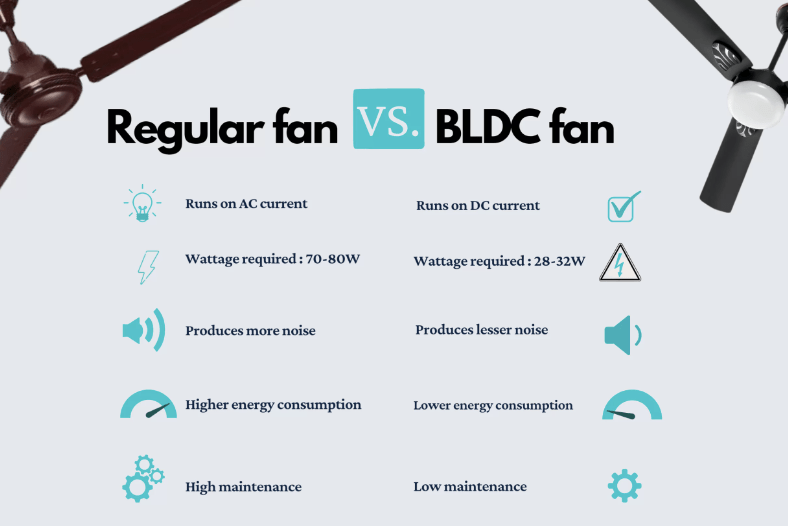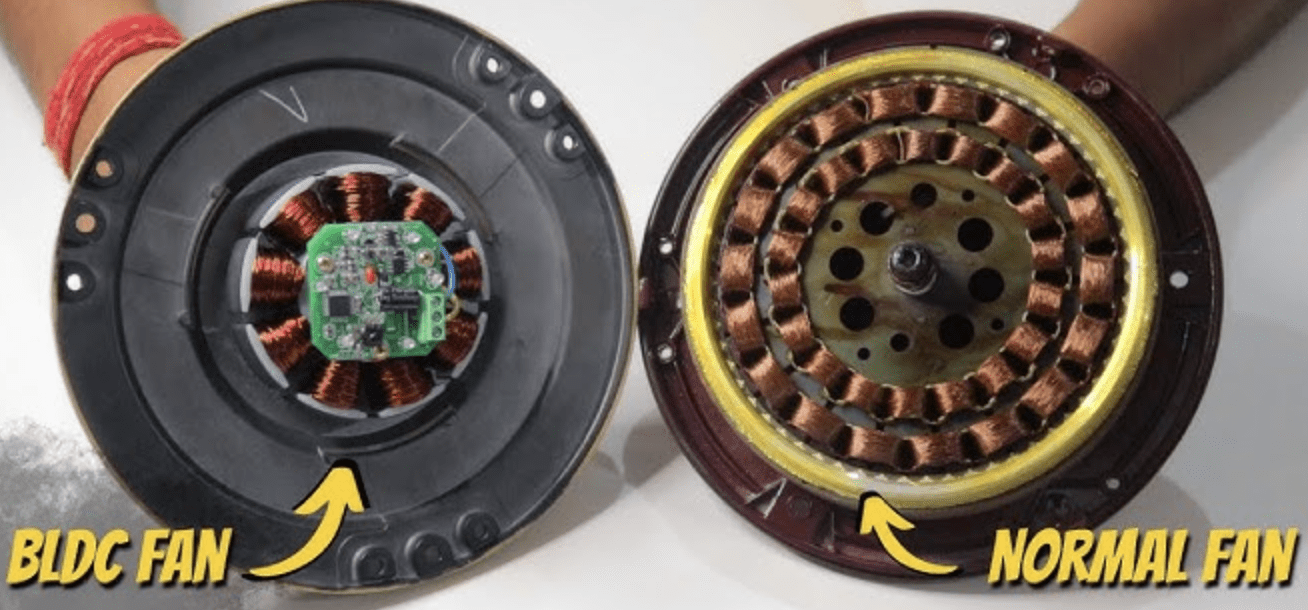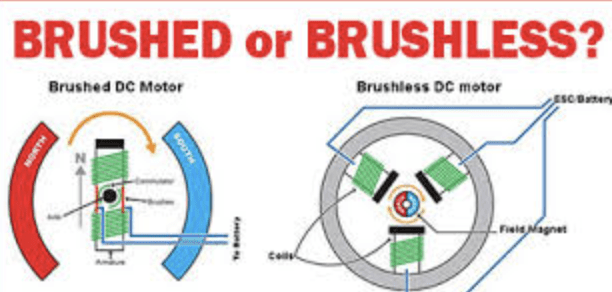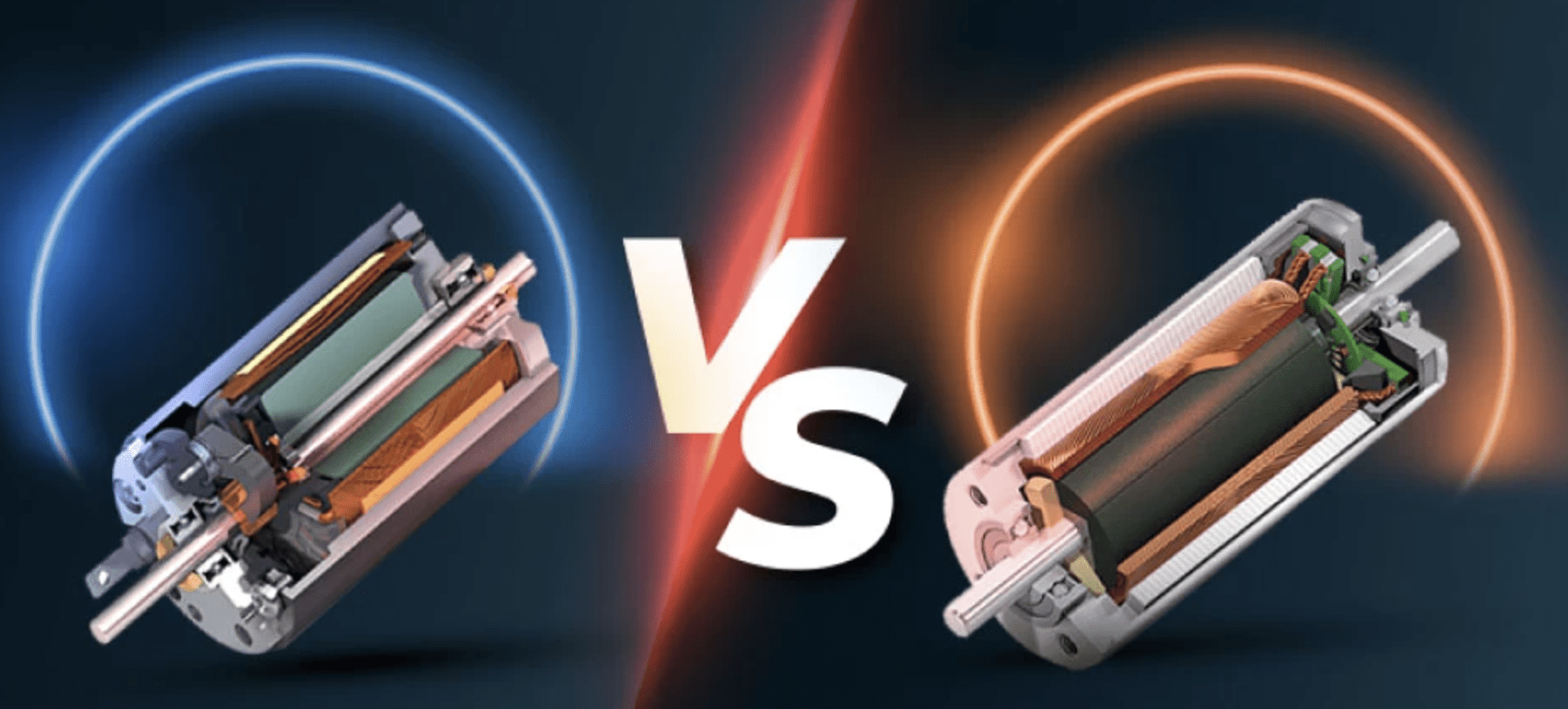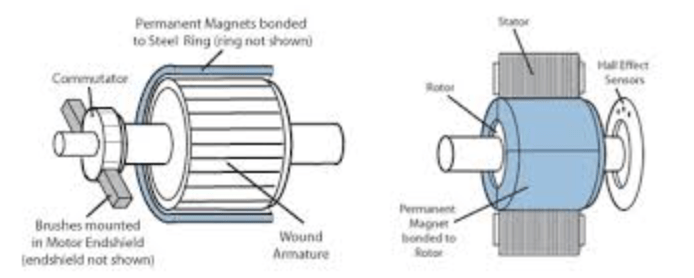Index
- Introduction
- BLDC vs Normal Motor Fan
- Energy Efficiency: BLDC vs Normal Motor Fan
- Performance and Speed Control
- Durability and Maintenance
- Noise Levels: A Quieter Operation
- Cost Considerations
- Environmental Impact
- Technological Advancements in BLDC Fans
- Applications and Versatility
- What is a BLDC Motor Fan?
- What is a Normal Motor Fan?
- Comparative Analysis: BLDC vs Normal Motor Fan
- BLDC Motor Fan Features
- Energy Efficiency
- Speed Control
- Durability
- Noise Levels
- Maintenance
- Initial Cost
- Environmental Impact
- Technological Features
- Normal Motor Fan Features
- Energy Efficiency
- Speed Control
- Durability
- Noise Levels
- Maintenance
- Initial Cost
- Environmental Impact
- Technological Features
- Conclusion
- FAQs
- What are the main benefits of using a BLDC fan?
- Are BLDC fans more expensive than normal motor fans?
- Do BLDC fans require less maintenance than normal motor fans?
- Can BLDC fans be used in industrial applications?
- Are there any environmental benefits to using BLDC fans?
- Do BLDC fans offer better speed control than normal motor fans?
BLDC vs Normal Motor Fan: A Comprehensive Comparison
When it comes to cooling solutions for homes and offices, the type of motor used in fans can significantly impact their efficiency, longevity, and performance. In recent years, Brushless DC (BLDC) motors have emerged as a revolutionary alternative to traditional induction motors. This article delves into the key differences between BLDC vs normal motor fans, exploring their benefits, drawbacks, and applications.
Introduction
Choosing the right fan for your cooling needs can be a daunting task, especially with the variety of options available in the market today. Among these options, BLDC and normal motor fans stand out due to their distinct technologies and operational mechanisms. Understanding the differences between these two types can help you make an informed decision and ensure you get the best value for your investment.
What is a BLDC Motor Fan?
A BLDC motor fan uses a Brushless DC motor, which relies on electronic commutation instead of the mechanical commutation found in traditional motors. This design eliminates the need for brushes, resulting in a more efficient, reliable, and longer-lasting motor. BLDC motors are known for their superior performance, energy efficiency, and quiet operation.
What is a Normal Motor Fan?
Normal motor fans, commonly known as induction motor fans, use a conventional AC induction motor. These motors operate using electromagnetic induction, where a current is induced in the rotor by the stator’s magnetic field. While they have been the standard for many years, normal motor fans are gradually being outpaced by the advancements offered by BLDC technology.
Energy Efficiency: BLDC vs Normal Motor Fan
One of the most significant advantages of BLDC motor fans is their energy efficiency. BLDC fans consume up to 70% less power compared to normal motor fans. This efficiency is achieved through the precise control of the motor’s speed and torque by electronic controllers, which reduce energy wastage. In contrast, normal motor fans operate at fixed speeds and often consume more power to deliver the same airflow.
Performance and Speed Control
BLDC fans offer superior performance and speed control capabilities. They can operate at variable speeds, allowing users to adjust the fan’s speed to match their cooling needs precisely. This feature not only enhances comfort but also contributes to energy savings. Normal motor fans, on the other hand, typically have limited speed settings and may not provide the same level of customization.
Durability and Maintenance
The absence of brushes in BLDC motors means there is less wear and tear, leading to a longer lifespan and reduced maintenance requirements. In normal motor fans, the brushes and commutator wear out over time, necessitating regular maintenance and replacement. This difference makes BLDC fans a more cost-effective choice in the long run, despite their higher initial cost.
Noise Levels: A Quieter Operation
BLDC fans are known for their quiet operation, thanks to the elimination of brushes and the smooth, precise control of the motor. This makes them ideal for environments where noise levels need to be kept to a minimum, such as bedrooms, offices, and libraries. Normal motor fans, with their mechanical commutation, tend to produce more noise, which can be a drawback in noise-sensitive areas.
Cost Considerations
While BLDC fans come with a higher upfront cost compared to normal motor fans, their long-term benefits often justify the investment. The energy savings, reduced maintenance costs, and longer lifespan of BLDC fans can lead to significant cost savings over time. In contrast, normal motor fans might be cheaper initially but could incur higher operational and maintenance costs in the long run.
Environmental Impact
With growing concerns about environmental sustainability, the energy efficiency of BLDC fans makes them a more eco-friendly choice. By consuming less power, they contribute to lower greenhouse gas emissions and reduce the overall carbon footprint. Normal motor fans, with their higher energy consumption, have a more significant environmental impact.
Technological Advancements in BLDC Fans
BLDC motor fans are at the forefront of technological advancements in home appliances. They often come equipped with smart features such as remote control, app connectivity, and compatibility with home automation systems. These features enhance user convenience and allow for more efficient management of the cooling system. Normal motor fans, while reliable, typically lack these advanced features.
Applications and Versatility
BLDC fans are highly versatile and can be used in a variety of applications, from residential cooling to industrial ventilation. Their ability to operate efficiently in different settings makes them a preferred choice for many users. Normal motor fans also find widespread use but may not offer the same level of adaptability and performance in diverse environments.
BLDC vs Normal Motor Fan: A Comparative Analysis
Feature BLDC Motor Fan Normal Motor Fan Energy Efficiency High (up to 70% less power) Moderate to Low Speed Control Variable, precise control Limited, fixed settings Durability High (less wear and tear) Moderate (brush wear out) Noise Levels Low (quiet operation) Higher (mechanical noise) Maintenance Low (less frequent) High (regular maintenance required) Initial Cost Higher Lower Environmental Impact Low (eco-friendly) Higher Technological Features Advanced (smart features) Basic Conclusion
In the debate of BLDC vs normal motor fan, it is evident that BLDC fans offer several advantages over their traditional counterparts. Their energy efficiency, durability, quiet operation, and advanced features make them a superior choice for modern cooling needs. While they come with a higher initial cost, the long-term benefits and cost savings make them a worthwhile investment. Normal motor fans, although reliable and widely used, are gradually being overshadowed by the advancements and efficiency of BLDC technology.
What are the main benefits of using a BLDC fan?
BLDC fans offer numerous benefits, including higher energy efficiency, quieter operation, longer lifespan, and advanced technological features. They are also more environmentally friendly due to their reduced power consumption.
Are BLDC fans more expensive than normal motor fans?
Yes, BLDC fans typically have a higher upfront cost compared to normal motor fans. However, their long-term benefits, such as lower energy bills and reduced maintenance costs, often offset the initial investment.
Do BLDC fans require less maintenance than normal motor fans?
Yes, BLDC fans require less maintenance because they do not have brushes that wear out over time. This leads to a longer lifespan and fewer maintenance needs compared to normal motor fans.
Can BLDC fans be used in industrial applications?
Absolutely. BLDC fans are versatile and can be used in a variety of settings, including industrial applications. Their efficiency and durability make them suitable for both residential and commercial use.
Are there any environmental benefits to using BLDC fans?
Yes, BLDC fans are more eco-friendly due to their lower power consumption. This leads to reduced greenhouse gas emissions and a smaller carbon footprint, making them a better choice for environmentally conscious consumers.
Do BLDC fans offer better speed control than normal motor fans?
Yes, BLDC fans provide precise and variable speed control, allowing users to adjust the fan’s speed to their exact cooling needs. Normal motor fans typically have limited speed settings and less flexibility in speed control.
- Product on sale
 Sonashi Tower Fan with 25 Feet Air Delivery, 4-Way Air Flow Anti Dust 5 Blade Tower FanOriginal price was: ₹4,200.00.₹2,989.00Current price is: ₹2,989.00.
Sonashi Tower Fan with 25 Feet Air Delivery, 4-Way Air Flow Anti Dust 5 Blade Tower FanOriginal price was: ₹4,200.00.₹2,989.00Current price is: ₹2,989.00. - Product on sale
 Jyoti Portable Revolving & Oscillating 1 Blade Tower FanOriginal price was: ₹4,280.00.₹2,789.00Current price is: ₹2,789.00.
Jyoti Portable Revolving & Oscillating 1 Blade Tower FanOriginal price was: ₹4,280.00.₹2,789.00Current price is: ₹2,789.00. - Product on sale
 Havells 1320mm Florette BLDC Motor Ceiling Fan | Remote Controlled, High Air Delivery Fan | 5 Star Rated, Upto 60% Energy Saving, 2 Year Warranty | (Pack of 1, Smoke Brown Wood)Original price was: ₹18,975.00.₹11,399.00Current price is: ₹11,399.00.
Havells 1320mm Florette BLDC Motor Ceiling Fan | Remote Controlled, High Air Delivery Fan | 5 Star Rated, Upto 60% Energy Saving, 2 Year Warranty | (Pack of 1, Smoke Brown Wood)Original price was: ₹18,975.00.₹11,399.00Current price is: ₹11,399.00. - Product on sale
 Havells 1200mm Elio BLDC Motor Ceiling Fan | Remote Controlled, High Air Delivery Fan | 5 Star Rated, Upto 60% Energy Saving, 2 Year Warranty | (Pack of 1, Smoke Brown)Original price was: ₹6,530.00.₹4,033.00Current price is: ₹4,033.00.
Havells 1200mm Elio BLDC Motor Ceiling Fan | Remote Controlled, High Air Delivery Fan | 5 Star Rated, Upto 60% Energy Saving, 2 Year Warranty | (Pack of 1, Smoke Brown)Original price was: ₹6,530.00.₹4,033.00Current price is: ₹4,033.00. - Product on sale
 Havells 1200mm Elio BLDC Motor Ceiling Fan | Remote Controlled, High Air Delivery Fan | 5 Star Rated, Upto 60% Energy Saving, 2 Year Warranty | (Pack of 1, Brown)Original price was: ₹5,630.00.₹4,033.00Current price is: ₹4,033.00.
Havells 1200mm Elio BLDC Motor Ceiling Fan | Remote Controlled, High Air Delivery Fan | 5 Star Rated, Upto 60% Energy Saving, 2 Year Warranty | (Pack of 1, Brown)Original price was: ₹5,630.00.₹4,033.00Current price is: ₹4,033.00. - Product on sale
 Havells 1200mm Elio BLDC Motor Ceiling Fan | Remote Controlled, High Air Delivery Fan | 5 Star Rated, Upto 60% Energy Saving, 2 Year Warranty | (Pack of 1, Grey)Original price was: ₹6,530.00.₹4,544.00Current price is: ₹4,544.00.
Havells 1200mm Elio BLDC Motor Ceiling Fan | Remote Controlled, High Air Delivery Fan | 5 Star Rated, Upto 60% Energy Saving, 2 Year Warranty | (Pack of 1, Grey)Original price was: ₹6,530.00.₹4,544.00Current price is: ₹4,544.00. - Product on sale
 Havells 1200mm Efficiencia Prime BLDC Motor Ceiling Fan | 5 Star with Remote, 100% Copper | Upto 53% Energy Saving, High Air Delivery, 2 Year Warranty, Inverter Friendly, Timer | (Pack of 1, Bianco)Original price was: ₹5,210.00.₹3,222.00Current price is: ₹3,222.00.
Havells 1200mm Efficiencia Prime BLDC Motor Ceiling Fan | 5 Star with Remote, 100% Copper | Upto 53% Energy Saving, High Air Delivery, 2 Year Warranty, Inverter Friendly, Timer | (Pack of 1, Bianco)Original price was: ₹5,210.00.₹3,222.00Current price is: ₹3,222.00. - Product on sale
 Havells 1200mm Efficiencia Prime BLDC Motor Ceiling Fan | 5 Star with Remote, 100% Copper | Upto 53% Energy Saving, High Air Delivery, 2 Year Warranty, Inverter Friendly, Timer | (Pack of 1, Brown)Original price was: ₹4,000.00.₹3,222.00Current price is: ₹3,222.00.
Havells 1200mm Efficiencia Prime BLDC Motor Ceiling Fan | 5 Star with Remote, 100% Copper | Upto 53% Energy Saving, High Air Delivery, 2 Year Warranty, Inverter Friendly, Timer | (Pack of 1, Brown)Original price was: ₹4,000.00.₹3,222.00Current price is: ₹3,222.00. - Product on sale
 Havells 1200mm Efficiencia Prime BLDC Motor Ceiling Fan | 5 Star with Remote, 100% Copper | Upto 53% Energy Saving, High Air Delivery, 2 Year Warranty, Inverter Friendly, Timer | (Pack of 1, White)Original price was: ₹5,395.00.₹3,099.00Current price is: ₹3,099.00.
Havells 1200mm Efficiencia Prime BLDC Motor Ceiling Fan | 5 Star with Remote, 100% Copper | Upto 53% Energy Saving, High Air Delivery, 2 Year Warranty, Inverter Friendly, Timer | (Pack of 1, White)Original price was: ₹5,395.00.₹3,099.00Current price is: ₹3,099.00.


